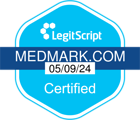An essential part of sustaining your sobriety is learning how to cope with challenging situations substance-free. If you are battling an addiction or are in recovery for substance abuse, you likely will face situations that may heighten your risk for relapse. Know that, despite challenges, you are not alone and can reach out for help when you need it.
The more you can anticipate high-risk situations to avoid if you have an addiction, the greater your chance of staying on track for a successful recovery.
What Is a High-Risk Situation?
A high-risk situation is any event that threatens a successful recovery. Whether a consequence of your surroundings or emotional state, high-risk situations may threaten your recovery in various ways. For example, a circumstance that stirs up unpleasant emotions such as loneliness, isolation, depression or anxiety may cause you to feel as if there’s no hope without drugs or alcohol.
The Risk for Relapse Falls Into Three General Categories
The risk for relapse includes the following categories for recovering addicts:
- Low-risk occurrences: Low-risk situations consist of circumstances in which you are not likely to relapse. For instance, revisiting a place or time during your actively addicted period in which you did not consume drugs or alcohol.
- Moderate-risk situations: These situations include times where you could be triggered to misuse drugs or alcohol.
- High-risk incidents: High-risk situations for recovering addicts consist of recurring conditions under which you are most likely to use a substance.
High-Risk Situations to Avoid in Recovery
A high-risk situation can be interpersonal, situational or emotional. Most high-risk situations fall into one of the following categories:
- Interpersonal conflict: Interpersonal conflicts can result in negative emotional states. These may, in turn, increase a recovering addict’s risk for relapse. Examples of these high-risk situations include having an argument with a spouse or loved one, financial disagreements or marital problems.
- Social pressure: Social situations can test your self-control as a recovering addict. Examples include, but are not limited to, being offered drugs while walking home or to your place of work, attending parties where alcohol and drugs are present and watching others use drugs or alcohol.
- Negative emotional states: Negative emotional states can put recovering addicts at risk for relapse. While activities such as meditation, exercise or listening to music can help you avoid negative emotions, sometimes these feelings still pop up. Boredom, sadness, anger, anxiety and stress are all common emotional experiences people in recovery face.
- Positive emotional states: While positive emotional states should, of course, be celebrated, having an awareness about what they can lead to may prevent relapse. Experiencing moments of joy or excitement can cause a person to relax and permit themselves to use a substance “just this once.” Feeling confident about a promotion at work, celebrating a sobriety milestone or feeling nostalgic about a place that brings back good memories can represent high-risk emotional states.
Common High-Risk Situations for Addicts
Prevalent high-risk situations for recovering addicts are:
- Severe stress at home or in the workplace.
- Having extra cash on hand.
- Fatigue or exhaustion.
- Feelings of anger, boredom, helplessness, loneliness, anxiousness or guilt.
- Dwelling on past mistakes.
- Believing that you can safely return to controlled substance use while doubting you have an addiction problem.
- Hearing others talk about the “good times” using drugs or alcohol.
- Being around people, places and situations previously associated with your substance abuse.
- Using mood-altering drugs such as sleeping pills, marijuana, tranquilizers or alcohol.
- Engaging in other addictive behaviors such as compulsive working, eating, gambling or sexual encounters.
How to Cope With High-Risk Situations as a Recovering Addict
The following nine tips — developed by Terry Gorski, a recognized expert in mental health, substance abuse, crime and violence — are essential to creating a relapse prevention plan:
- Stabilization: Embark on the first steps on your path to recovery.
- Assessment: Identify and resolve any negative thinking or behavioral patterns that contributed to past relapses.
- Relapse education: Understand the process of relapse.
- Warning signs identification: Compile a list of high-risk situations and triggers for relapse. When you understand these triggers, it’s easier to stay on track to recovery.
- Warning signs management: Create a coping strategy to deal with triggers outlined in the previous step.
- Recovery planning: Initiate conversations and activities with people who will help you resist temptations and previous tendencies.
- Inventory training: Establish routines to evaluate, anticipate and avoid high-risk situations.
- Family involvement: Involve your family if you can, as this can have a powerful impact on helping you sustain your sobriety.
- Follow up: Remember that recovery is an ongoing process. Review your triggers and implement coping strategies on an ongoing basis.
Develop a Relapse Prevention Plan
Sometimes, it’s not always possible to avoid high-risk circumstances in recovery. In these cases, having a relapse prevention plan in place can help you respond to triggering situations in responsible, healthy ways.
Coping plans for high-risk situations should be highly detailed and tailored to specific occurrences. These occurrences will depend on the high-risk situations you think may trigger you to use drugs or alcohol.
Build a Recovery Circle
Building a recovery circle is a powerful way to avoid high-risk situations. A recovery circle should include:
- Support groups.
- Counselors.
- Health professionals.
- Friends and family members whom you trust.
Benefits of Joining a Support Group for Recovering Addicts
By joining a support group, you can learn what strategies have been successful for others in recovery, and have a safe, judgment-free place to talk about your struggles and triumphs.
You can choose from several groups, many of which involve a 12-step process. These include:
- Narcotics Anonymous (NA).
- Gamblers Anonymous (GA).
- Alcoholics Anonymous (AA).
- Adult Children Anonymous (ACA).
- Cocaine Anonymous (CA).
- Marijuana Anonymous (MA).
Other support groups not based on the 12 steps include Secular Organizations for Sobriety, Women for Sobriety and SMART Recovery.
Let MedMark Treatment Centers Support You on the Road to Recovery
MedMark helps those struggling with opioid addictions and their loved ones across the United States.
Contact us today to start the treatment process or learn more about opioid addiction.



